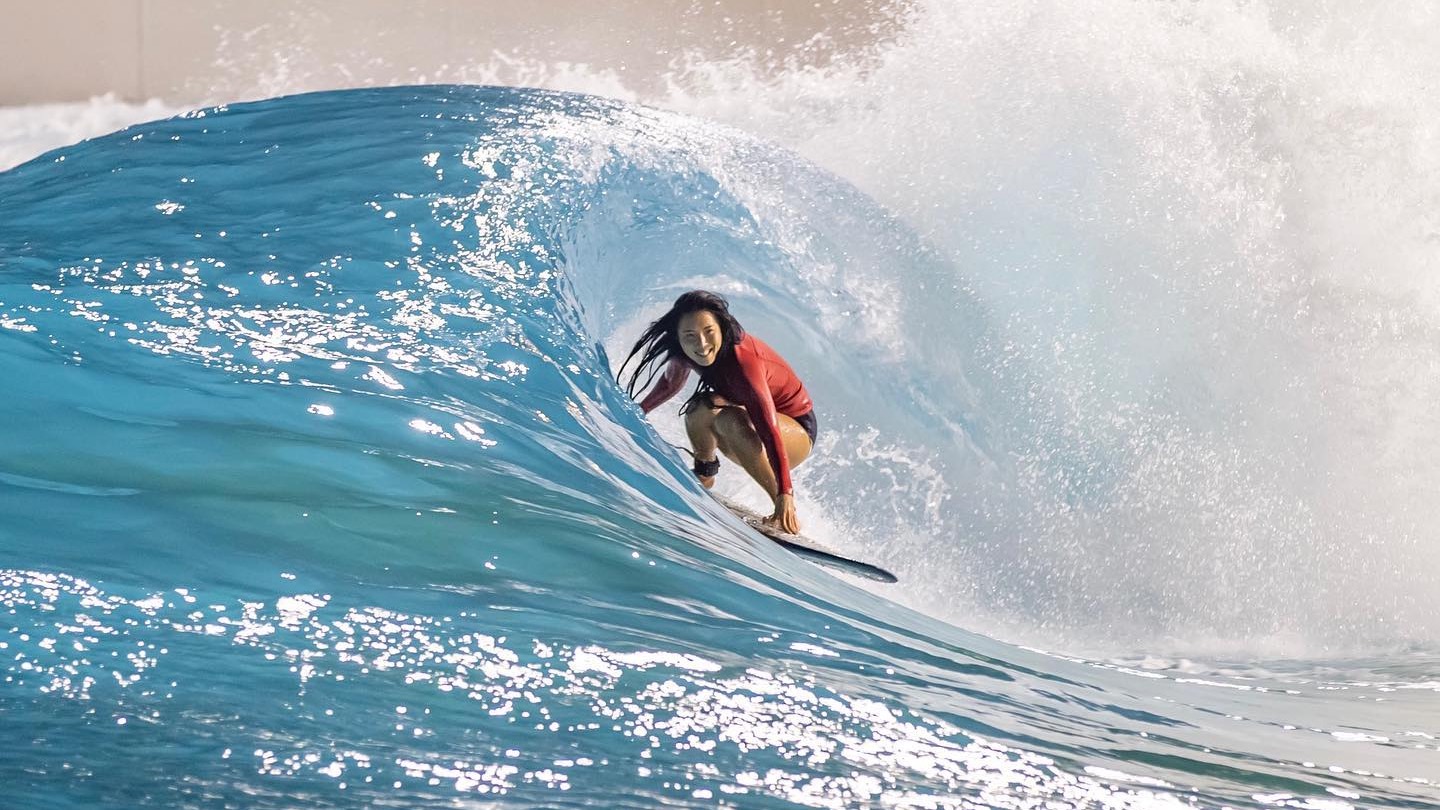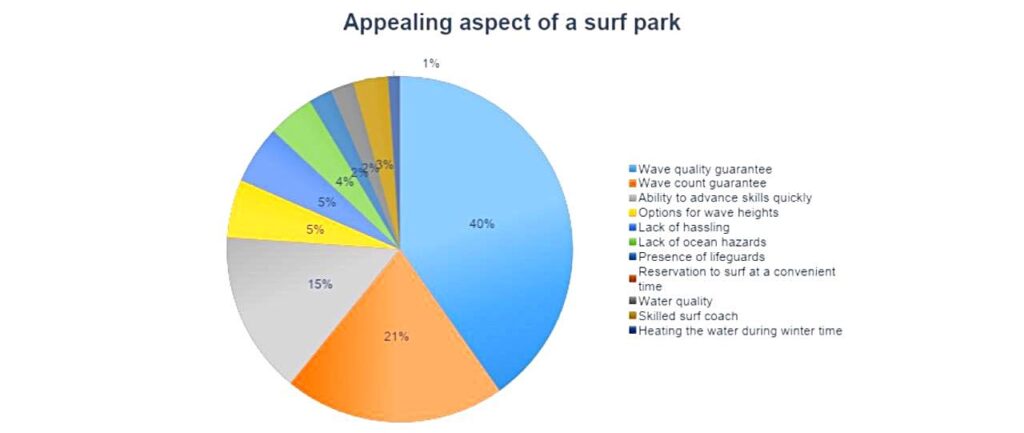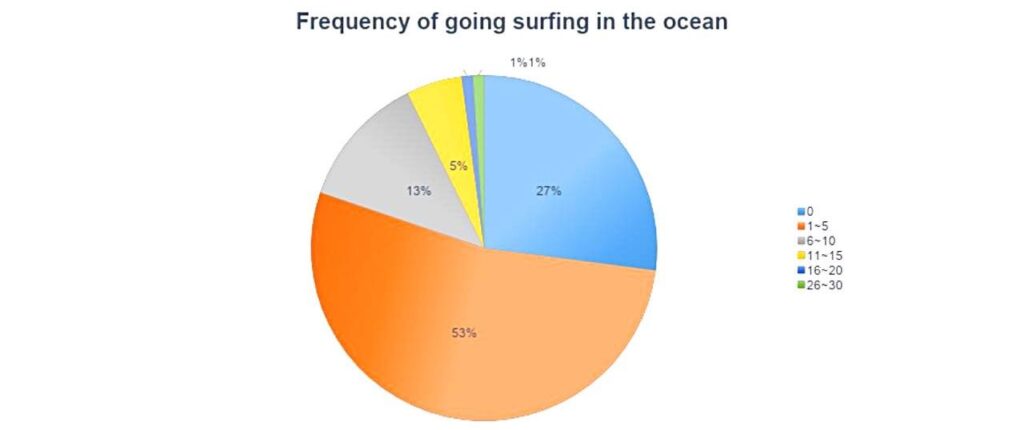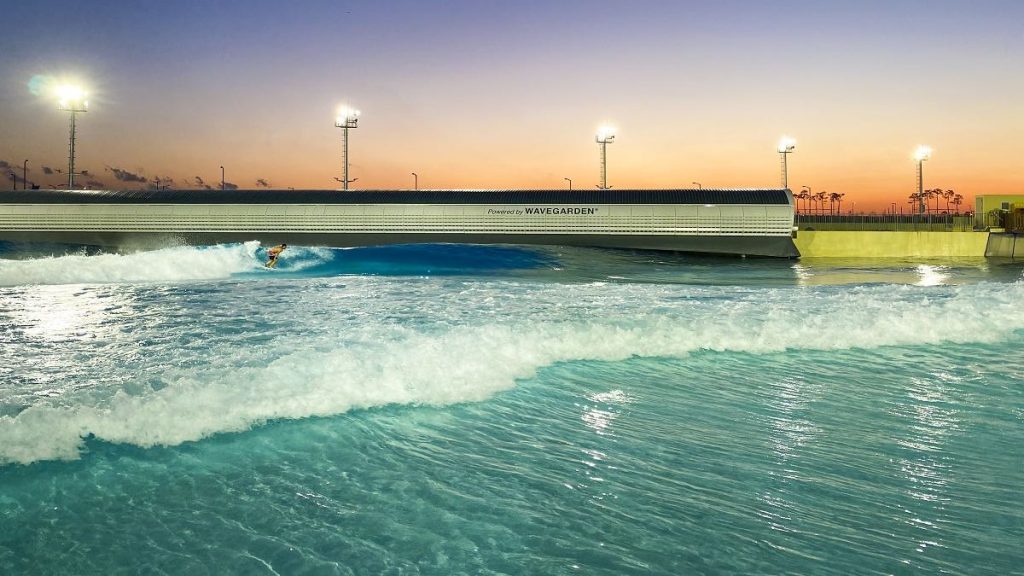New study drills down the habits of Korean surfers

‘Min Mool’ means tap water in Korean and was coined to identify a surfer who has only surfed at Wave Park in Siheung-Si. Korean surf culture is in its infancy, slowly maturing and developing its own dedicated breed of chlorine surfers and we wanted to know how this consistent, quality wave is shaping the Korean surf culture.
Fortunately, we have Euna Kim who worked extensively to bring this Wavegarden Cove online. She’s an academic, with a Ph.D. in Language Interpretation and Translation. Consequently, she can’t stay away from nerdy stuff like research. And for that we’re thankful.
Euna recently conducted a survey of Korean surfers to find out both the draws and downers of going to a wave pool. The goal of the survey, simply phrased “Why Do You Go To a Surf Park?” was to analyze the surfing behaviors of people living in Korea and whether they prefer surfing in the ocean or at Wave Park, which factors attract them to particular places, and the pros and cons of surfing environments at surf parks.
The survey contained questions concerning ocean surfing and wave pool surfing experiences, examining the surfing behaviors of participants. It’s pretty dry, academic fodder with many gold nuggets of insight. In this piece, we cherry-picked the best to present to you here. If you would like to read the entire survey as it appeared in ITAPJ Vol.3 Number 3 you can download the PDF.

Survey respondents said being able to practice and improve will being guaranteed a set number of waves per session were the main reasons for surfing the pool.
“The most appealing benefit of the surf park is the finely programmed waves that break at different heights and speeds and the guaranteed number of waves in each session,” the study said. “So, the wave making machines using technology such as Wavegarden, achieved their goals to satisfy the surfing community. And, these perfect waves create the perfect grounds for practicing to improve one’s surfing ability.”
Another benefit is the strict adherence to the ‘one wave one surfer’ rule. The wave pool allows only one surfer in the lineup to ride each wave. The rest of the surfers are lined up and wait their turn. Conversely, the lineup in the ocean is quite busy and hectic with surfers, and the local surfers who read the waves much better than new surfers will catch the best waves. So, the wave pool ensures that everyone gets the same quality waves.
Learning to surf can be quite challenging and it’s known as one of the hardest sports to master. The wave pool setup also creates the perfect arena for practicing and improving one’s surfing ability.

The drawbacks, of which there were few, included cost, being in a man-made environment and the sameness of each passing wave. Forty-four out of 92 people answered that they book two sessions per visit, which compounds costs.
Some respondents also cited the sound of wave-generating machines as quite unpleasant.
“The gentle breeze, relaxing scent of the ocean, and wave-breaking sounds are all replaced by the regular machine sounds generated from a wave machine,” said Euna.
In addition, consistently surfing a pool means that ‘Min Mool’ surfers might not learn the subtleties necessary to read the moods of ocean surf, where every wave breaks a bit differently especially at beach breaks. Open sand breaks constitute 90% of Korea’s surf spots.

How often are Korean’s hitting the wave pool?
In the survey roughly 40% of the participants said they go surfing one-to-five times per month during the summer season while nearly 30% go six-to-10 times. Within these groups half went surfing one-to-five times a month in the ocean and half went surfing one-to-five times a month at the wave pool.
The average hours of surfing during each visit were slightly longer when surfing in the ocean. About 35% would surf for two-to-three hours while roughly 45% would surf for a maximum of two hours at the surf park.
Prior to the survey, Euna hypothesised that the rise in surf parks would create an equal rate of decline in time spent surfing in the ocean. She found that surfers were just stoked and surfing whenever, wherever they can.
“So, it is not the case that surfers are packed at surf parks and the ocean now empty,” said Euna. “People are choosing to surf in the ocean and at surf parks depending on their preference. Instead of an emptying ocean, perhaps it is the ski resorts, theme parks, and tennis courts that should be worried about losing their customers to surfing.”
Related Coverage
